Crystal UHD vs. QLED vs. OLED: Television technologies are getting better day by day. But this progress comes up with tons of confusing terminologies. Crystal UHD, QLED, and OLED are some of these terms, which are considered the same by some people. But if we look at the difference between Crystal UHD, QLED, and OLED, these all have different resolutions and price ranges.
Let’s take a closer look at QLED vs. OLED vs. Crystal UHD
| Size | Crystal UHD is the thickest, and OLED is the thinnest |
| Price | OLED is the most expensive of the three |
| Brightness | Crystal UHD has poor brightness compared to QLED or OLED |
| Power | OLED consumes the highest power than UHD and QLED |
Table of Contents
What Is Crystal UHD?
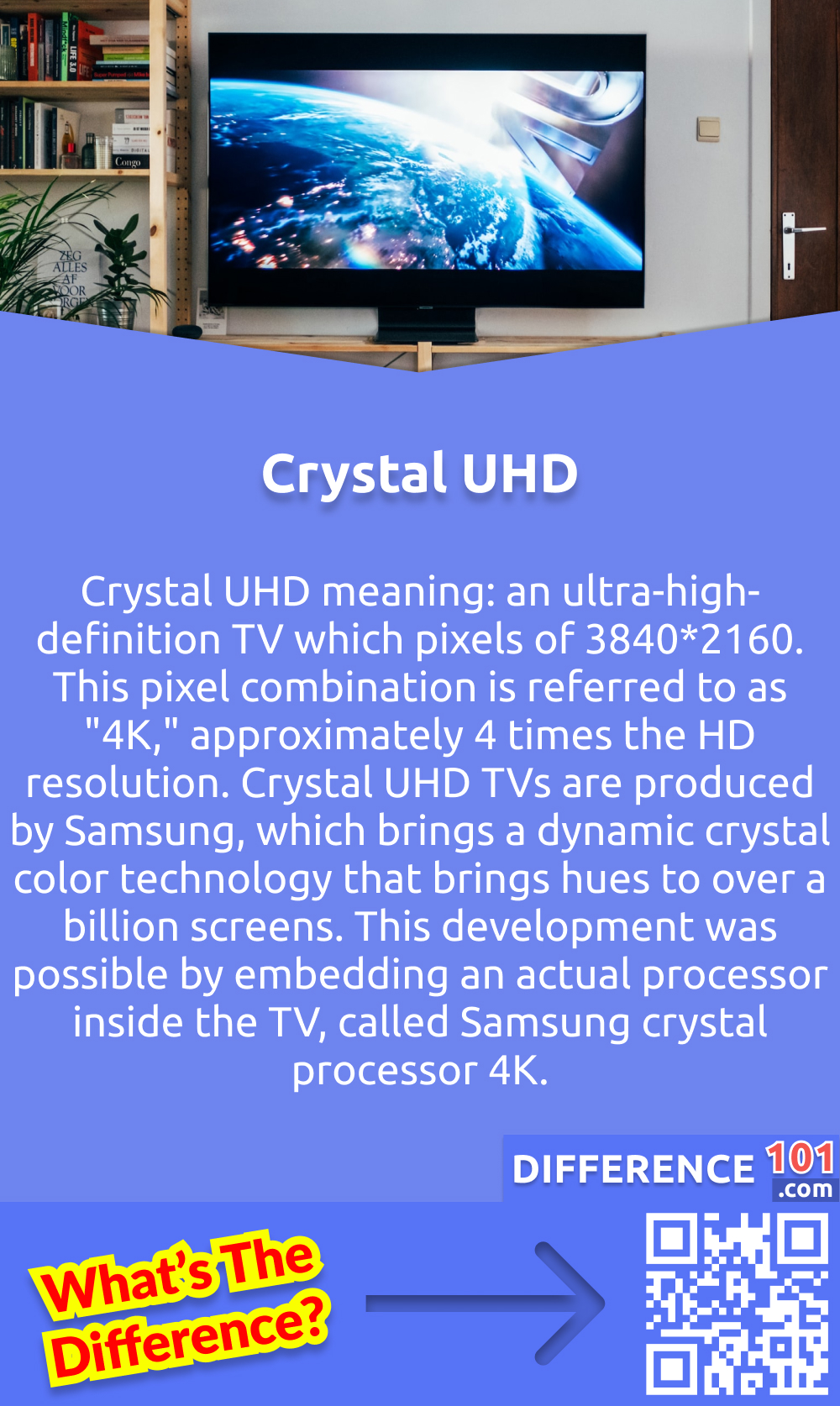
Crystal UHD meaning: an ultra-high-definition TV which pixels of 3840*2160. This pixel combination is referred to as “4K,” approximately 4 times the HD resolution. Crystal UHD TVs are produced by Samsung, which brings a dynamic crystal color technology that brings hues to over a billion screens. This development was possible by embedding an actual processor inside the TV, called Samsung crystal processor 4K. this hardware helps in making the picture more vivid. The company provides Crystal HD TVs from 43 inches to 85 inches. This gives the customer plenty of options, depending on the model, size, features, and prices, ranging from $350 to $2000.
What Is QLED?
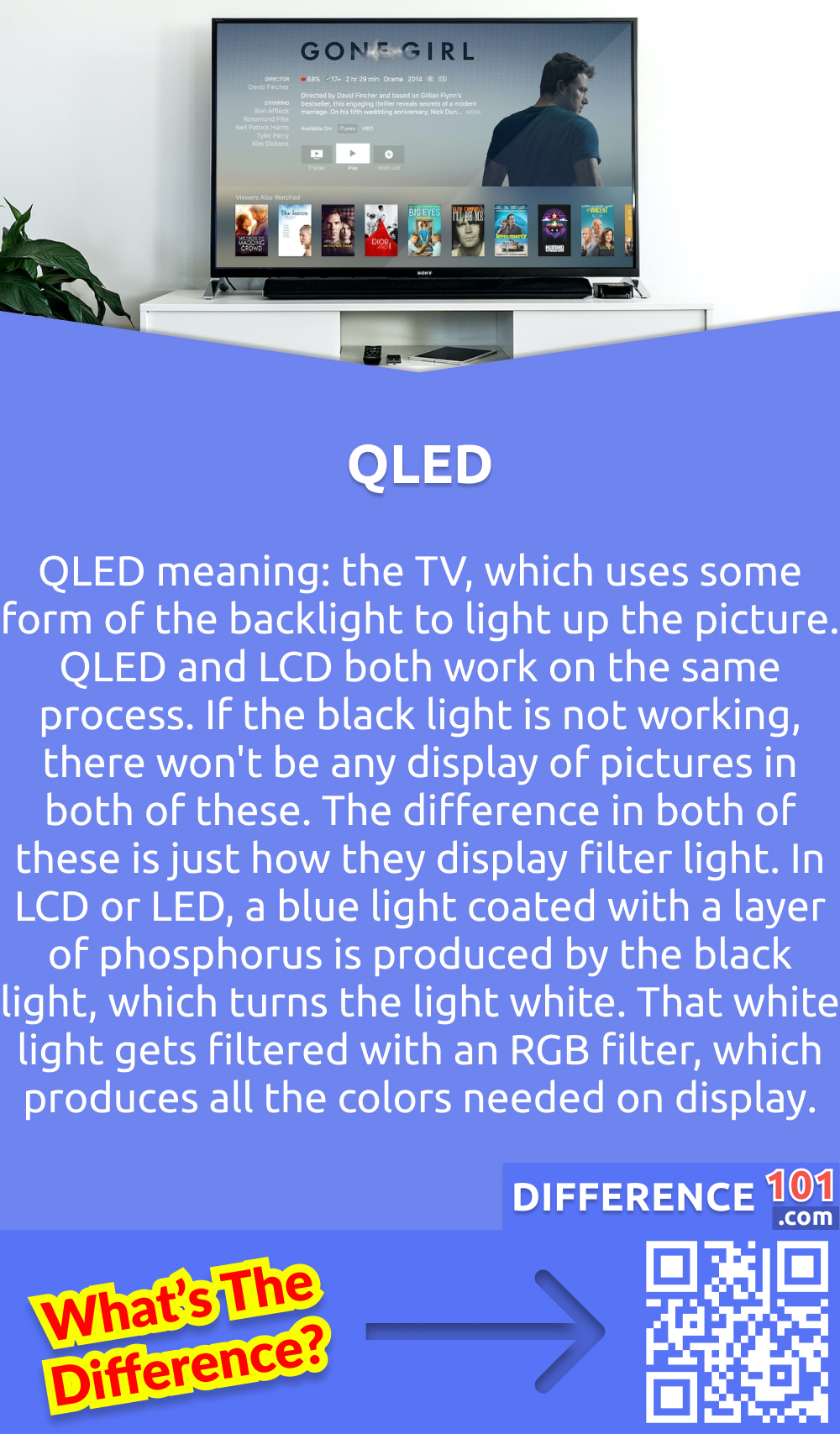
QLED meaning: the TV, which uses some form of the backlight to light up the picture. QLED and LCD both work on the same process. If the black light is not working, there won’t be any display of pictures in both of these. The difference in both of these is just how they display filter light. In LCD or LED, a blue light coated with a layer of phosphorus is produced by the black light, which turns the light white. That white light gets filtered with an RGB filter, which produces all the colors needed on display.
What is OLED?
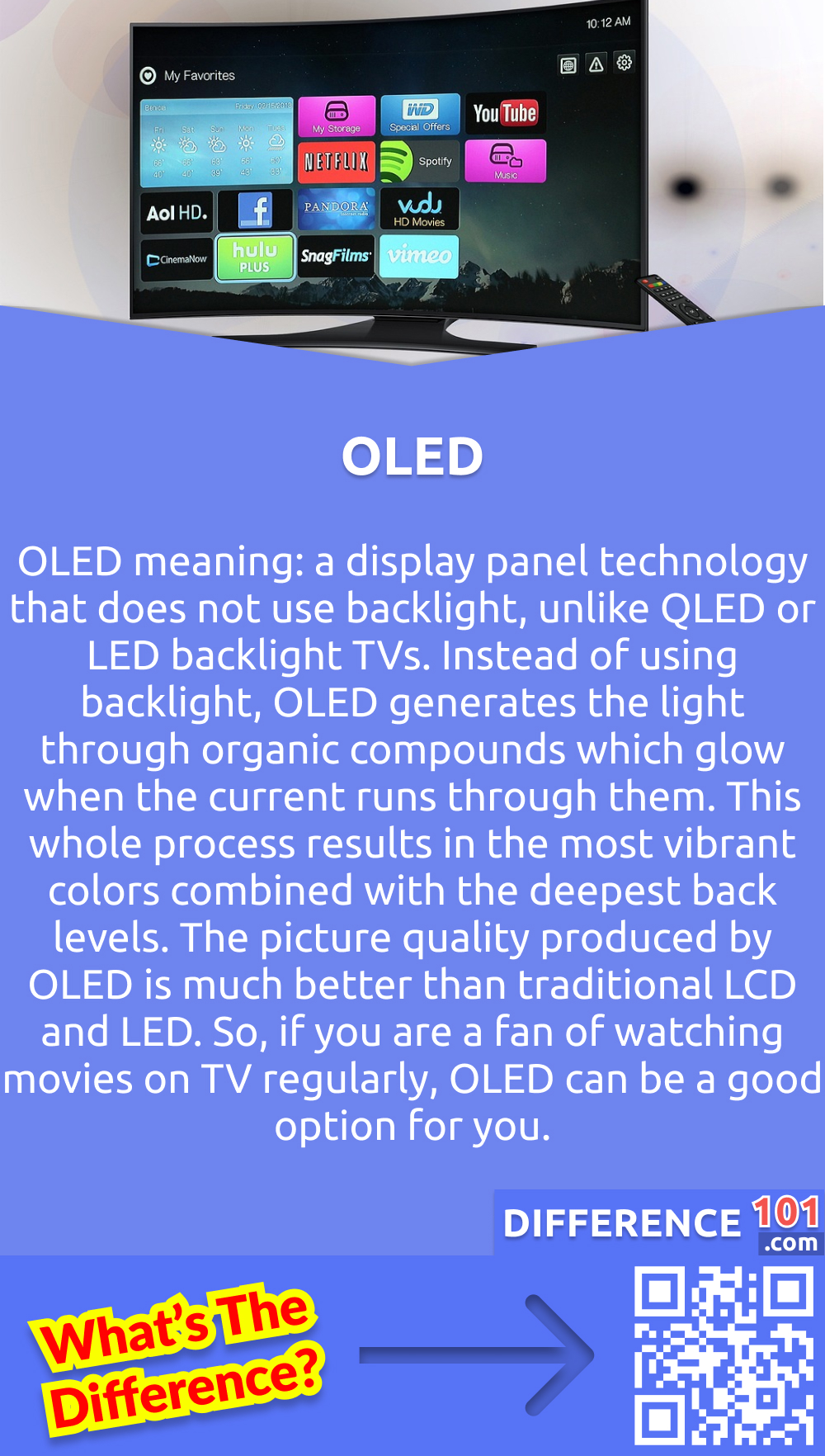
OLED meaning: a display panel technology that does not use backlight, unlike QLED or LED backlight TVs. Instead of using backlight, OLED generates the light through organic compounds which glow when the current runs through them. This whole process results in the most vibrant colors combined with the deepest back levels. The picture quality produced by OLED is much better than traditional LCD and LED. So, if you are a fan of watching movies on TV regularly, OLED can be a good option for you.
6 Key Differences Between Crystal UHD and QLED and OLED
| Components | Crystal UHD | QLED | OLED |
|---|---|---|---|
| Color Quality | The color quality of crystal UHD TVs is average as compared to QLED and OLED. | QLED has a deeper color quality in comparison to LCD and LED | OLED has the best color quality of all, as its pixel can be turned off and on |
| Brands | Crystal UHD TVs are only produced by the Samsung | Various brands produce QLED, including Sony, and VIZIO | Some popular brands of OLED TVs are Sony, Panasonic, Samsung, and VIZIO |
| Light Wastage | There are high chances of light wastage in Crystal UHD | QLED has a moderate rate of light wastage | OLED has minimal light wastage as compared to others |
| TV Size Range | The size of crystal UHD varies from 44 inches to smaller than 86 inches | The size of QLED is 43 inches or smaller to 98 inches | OLED has an almost similar size to QLED, 43 inches to 98 inches |
| Price Range | The price range of crystal UHD is from $350 to $2000 | QLED has a moderate price range between $500-$10000 | OLED has a higher price range between $700-$100000 |
| Resolution | It has a resolution of 4k without any range | Its resolution varies from 4k to 8k | Its resolution also varies from 4k to 8k |
Which Is Better?
If we compare Crystal UHD versus QLED versus OLED, OLED is the best choice in terms of display quality. Crystal UHD is the cheapest if you are looking for a reasonable price, but the price increases drastically when you move to QLED or OLED versions. In fact, when it comes to the best quality Tv, it depends upon different factors like budget, technology, and color quality that users want.
Crystal UHD vs. QLED vs. OLED Similarities
- Whether it’s Crystal UHD or QLED, or OLED, all of these have one common brand, Samsung.
- All of these are popular technologies for panels that are used these days.
Crystal UHD vs. QLED vs. OLED Examples
Crystal UHD Examples
- SAMSUNG 43-Inch Cla ss Crystal 4K UHD AU8000 Series
- SAMSUNG 60-inch Class Crystal UHD TU7000 Series
- SAMSUNG 70-Inch Class Crystal UHD TV 7000 Series
QLED Examples
- Samsung QN90B QLED
- Insignia F50 QLED
- Hisense U6H
OLED Examples
- VIZIO H1 OLED
- LG C1 OLED
- Samsung S95B
Crystal UHD vs. QLED vs. OLED Pros and Cons
Crystal UHD Pros and Cons
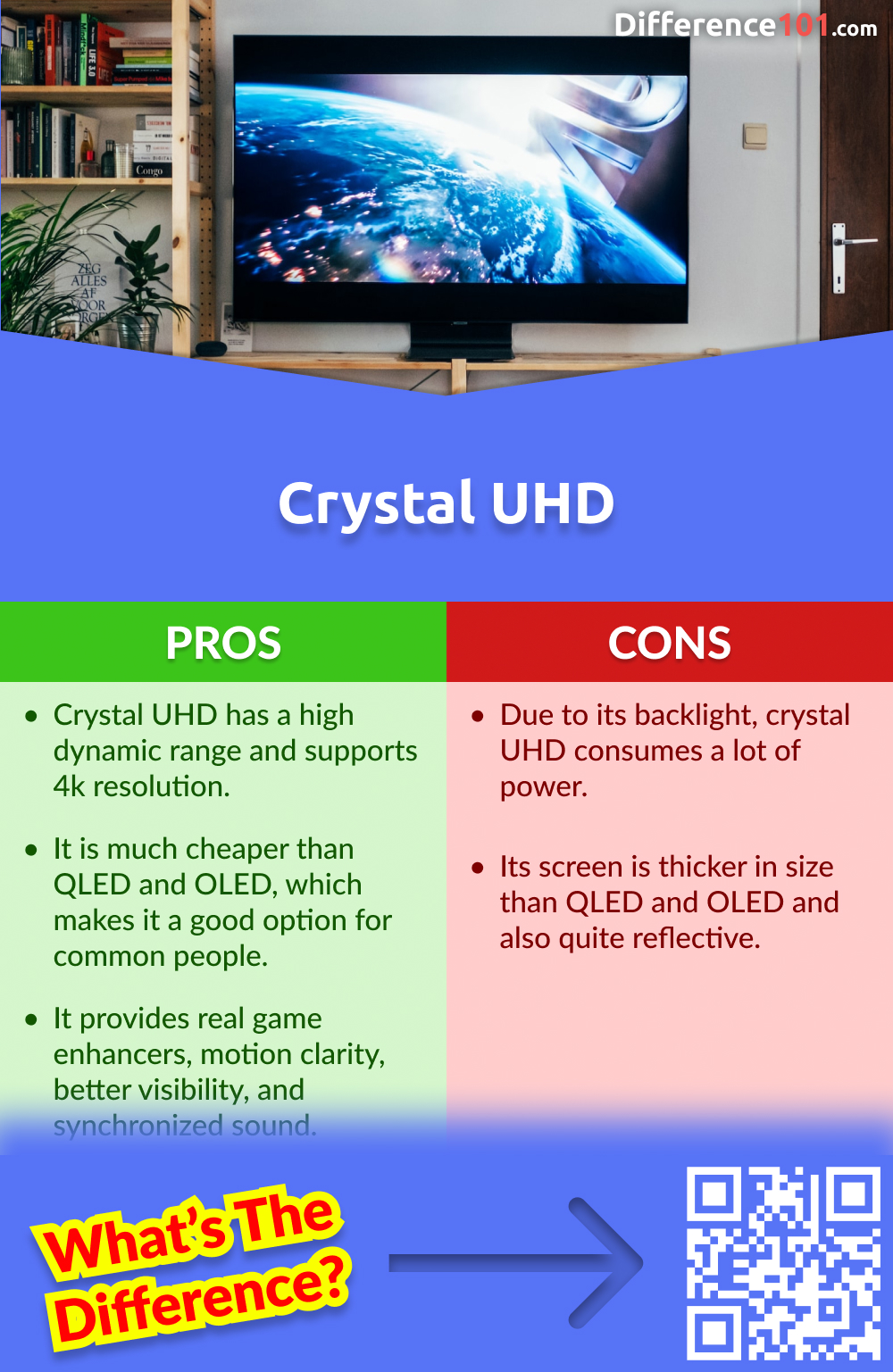
Pros of Crystal UHD
- Crystal UHD has a high dynamic range and supports 4k resolution.
- It is much cheaper than QLED and OLED, which makes it a good option for common people.
- It provides real game enhancers, motion clarity, better visibility, and synchronized sound.
Cons of Crystal UHD
- Due to its backlight, crystal UHD consumes a lot of power.
- Its screen is thicker in size than QLED and OLED and also quite reflective.
QLED Pros and Cons
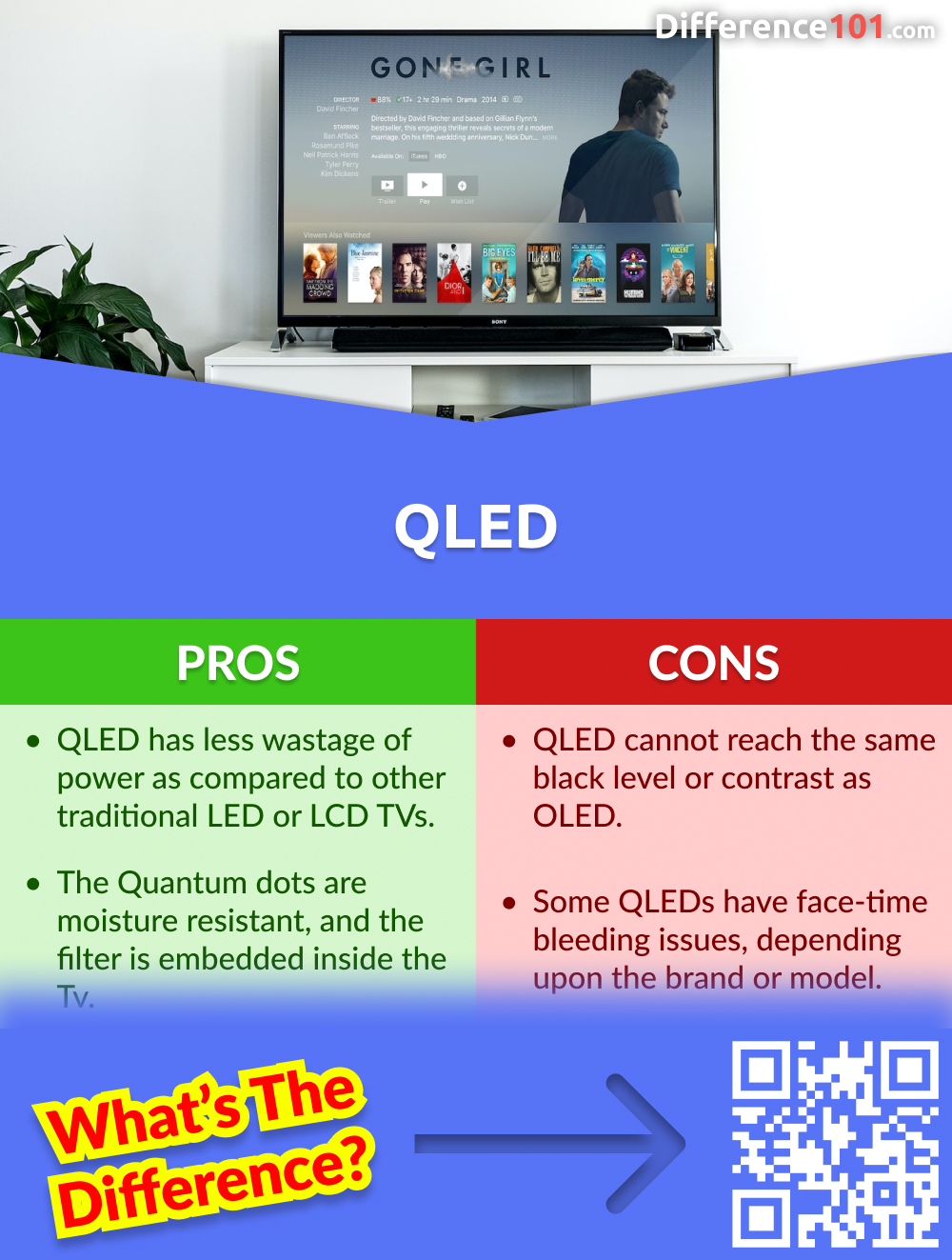
Pros of QLED
- QLED has less wastage of power as compared to other traditional LED or LCD TVs.
- The Quantum dots are moisture resistant, and the filter is embedded inside the Tv.
Cons of QLED
- QLED cannot reach the same black level or contrast as OLED.
- Some QLEDs have face-time bleeding issues, depending upon the brand or model.
OLED Pros and Cons
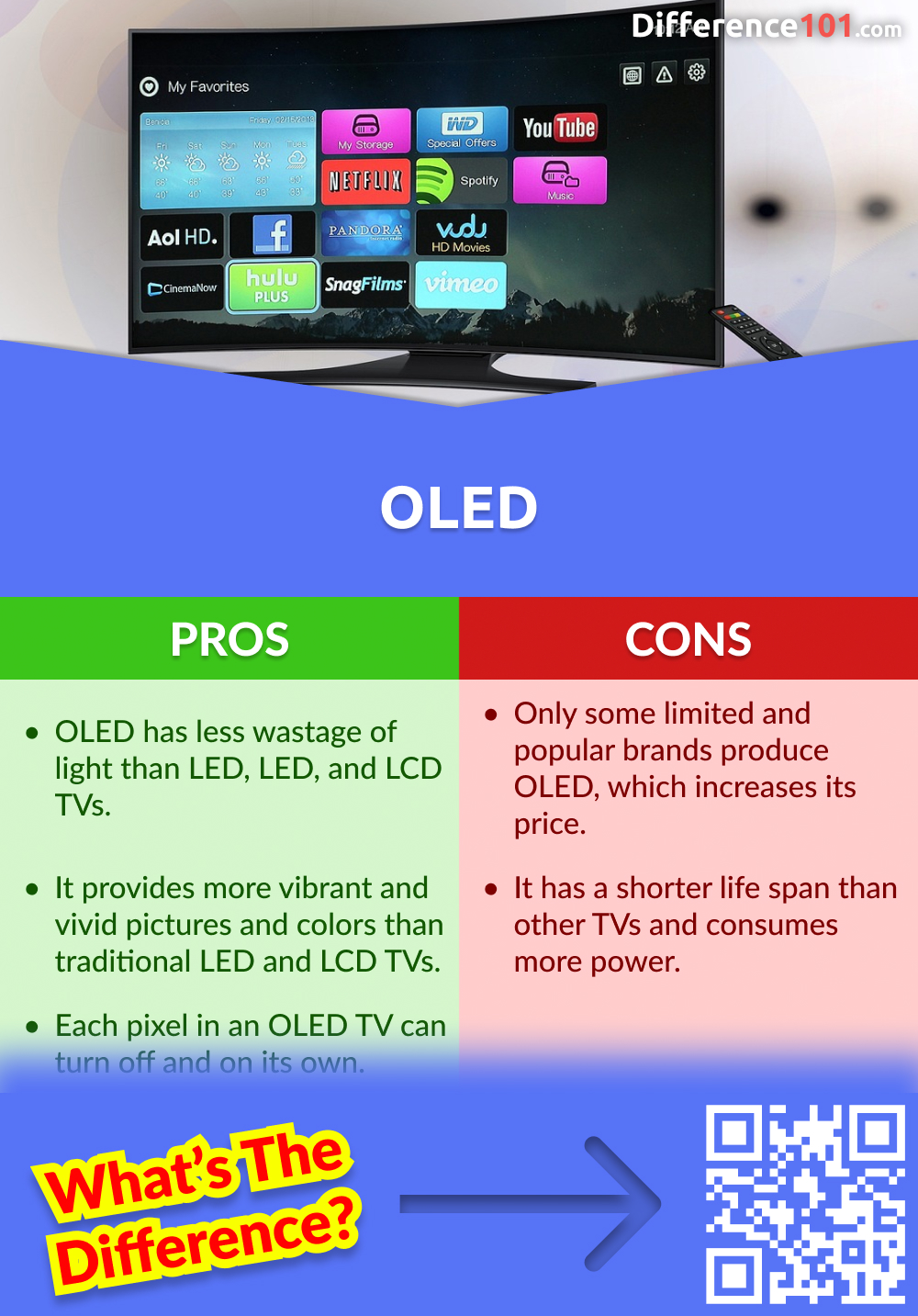
Pros of OLED
- OLED has less wastage of light than LED, LED, and LCD TVs.
- It provides more vibrant and vivid pictures and colors than traditional LED and LCD TVs.
- Each pixel in an OLED TV can turn off and on its own.
Cons of OLED
- Only some limited and popular brands produce OLED, which increases its price.
- It has a shorter life span than other TVs and consumes more power.
UHD vs. QLED Comparison Chart
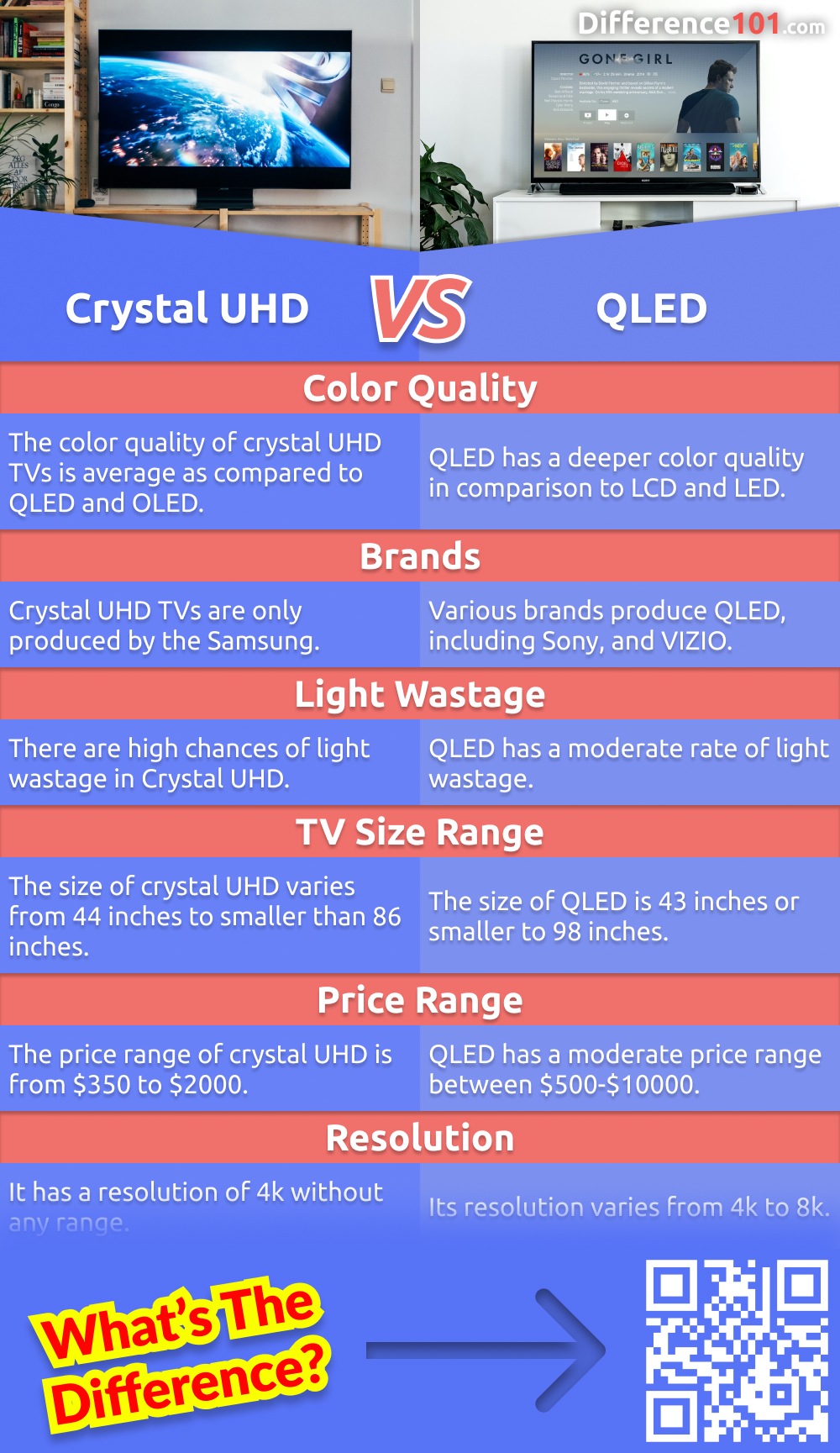
Comparison Video
QLED vs. OLED Comparison Chart
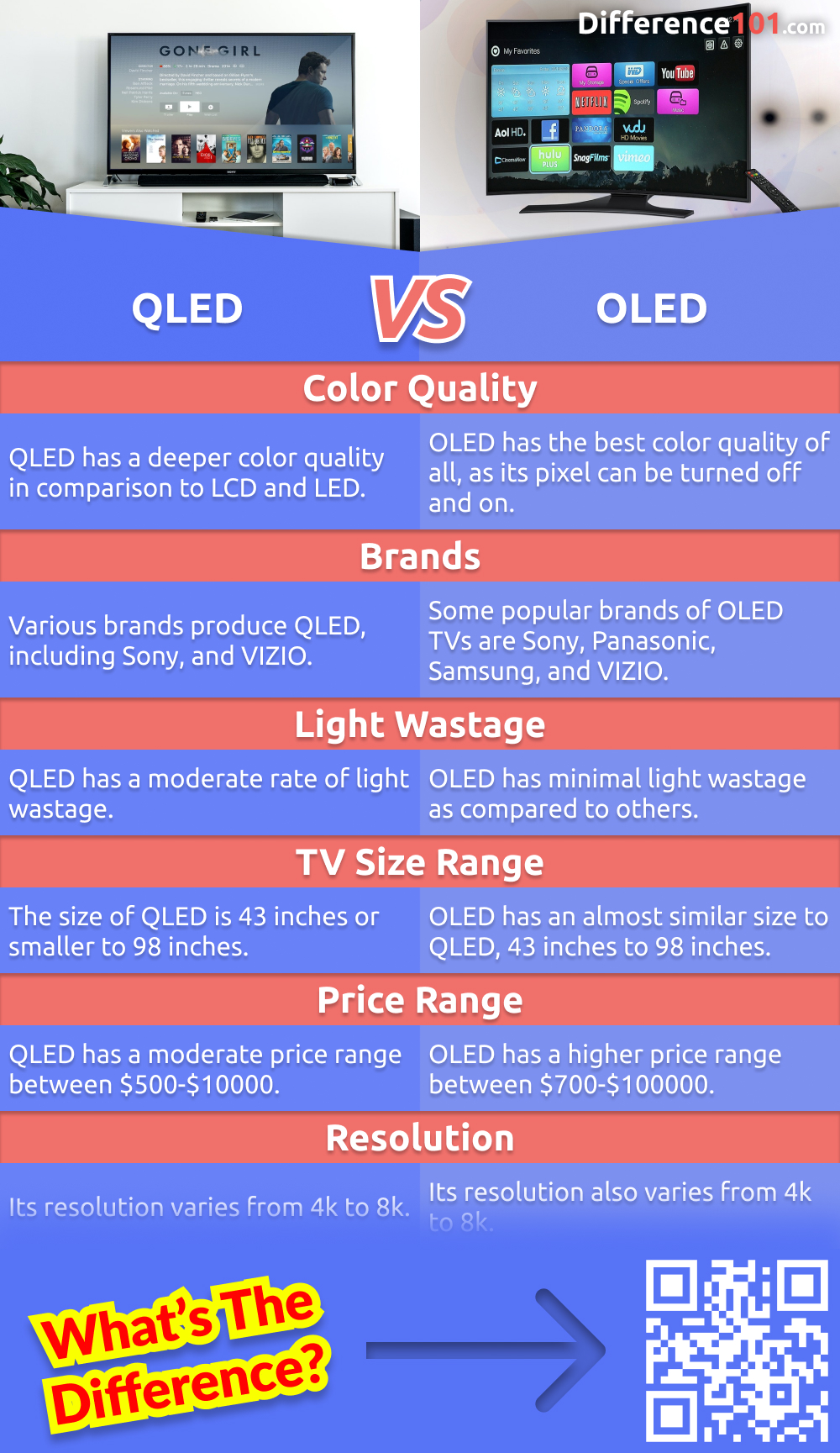
Comparison Video
Conclusion
Panel technology is advancing day by day, which makes upgrading the technologies. Crystal UHD, QLED, and OLED display panel technologies bring colors into people’s lives. All these technologies are produced by various brands to bring colors to their screen. But if we talk about Crystal UHD vs. QLED vs. OLED differences, these all are different in color quality, power usage, price range, and resolution. OLED is expensive from all of these due to its advanced technology. Crystal UHD is the thickest, and QLED has lower light wastage rates than traditional LCD and LED.







